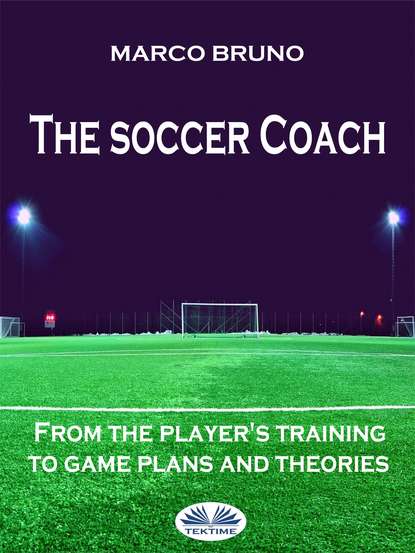По всем вопросам обращайтесь на: info@litportal.ru
(©) 2003-2024.
✖
The Soccer Coach
Настройки чтения
Размер шрифта
Высота строк
Поля
if the answer is "no", there is no reason to continue the exercise.
- does the exercise scare the player?
if the answer is "yes", it is better to start with the simplest exercises and further encouraging the player.
- is it a technical problem?
- what technique is it?
make sure the player understands where he is wrong and explain how to do it correctly and train him in this way.
- is it a tactical problem?
1 lack of understanding (isolate and explain the individual parts);
2 lack of intuition (the player does not see the action that takes place for three reasons:
- too crowded action;
- too fast action;
- plays with his head down.
1 lack of application (the player understands what it’s required from him, but he misses the execution because he tries to make things too difficult).
f) communication: all that has been said so far does not matter if the coach is not able to communicate. A coach can communicate in two ways:
1 by demonstration, highlighting the following qualities:
- correct game actions;
- actions carried out in a simple way;
- clear demonstration, highlighting the main factor;
- set a minimum target;
1 by the word: communication through speech is very important, but it depends on the conviction with which he speaks the coach. Before speaking, the coach must think for a moment about what he has to say to be sure of the meaning of the words; must avoid words or complicated speeches and watch the audience while talking. Finally, he must always speak positively because it is more effective to say “do this” instead of saying “you were wrong doing this”.
Communication in figures
We spend 70% of our lives communicating verbally. This time is as follows:
hearing 45%
talking 30%
reading 15%
writing 10%
Of all this we can remember:
of what we read 10%
of what we hear 20%
of what we observe 30%
of what we hear and observe 50%
of what we say 80%
of what we explain 90%
In a conversation we can:
listen 50% of what is said;
hear and listen 50% of what we listen (only 25%);
understand 50% of what we hear (only 12.5%);
believe 50% of what we understand (only 6.25%);
remember 50% of what we believe (only 3.125%).
How many times have we talked for a long time with our athletes?
What is left of our words?
3.125%!!!!!!!!!!
Everything else is forgotten.
To train means to communicate. Some speak but communicate little and struggle to enter into a relationship, while others speak too much and leave little time to listen.
Every teacher must always keep in mind the importance of the sequence:
I LISTEN = I FORGET
I SEE = I REMEMBER
I EXECUTE = I LEARN
Teaching during the game
The coach must be very skillful and careful in training matches. The training match is the culmination of the session, the final development of a good team action. The techniques and exercises in small groups are like pieces of a mosaic and teaching to put them into practice during the game is like trying to complete the mosaic. It is too optimistic to expect that those pieces go alone in their place. To obtain satisfactory and useful results, it is appropriate to establish:





